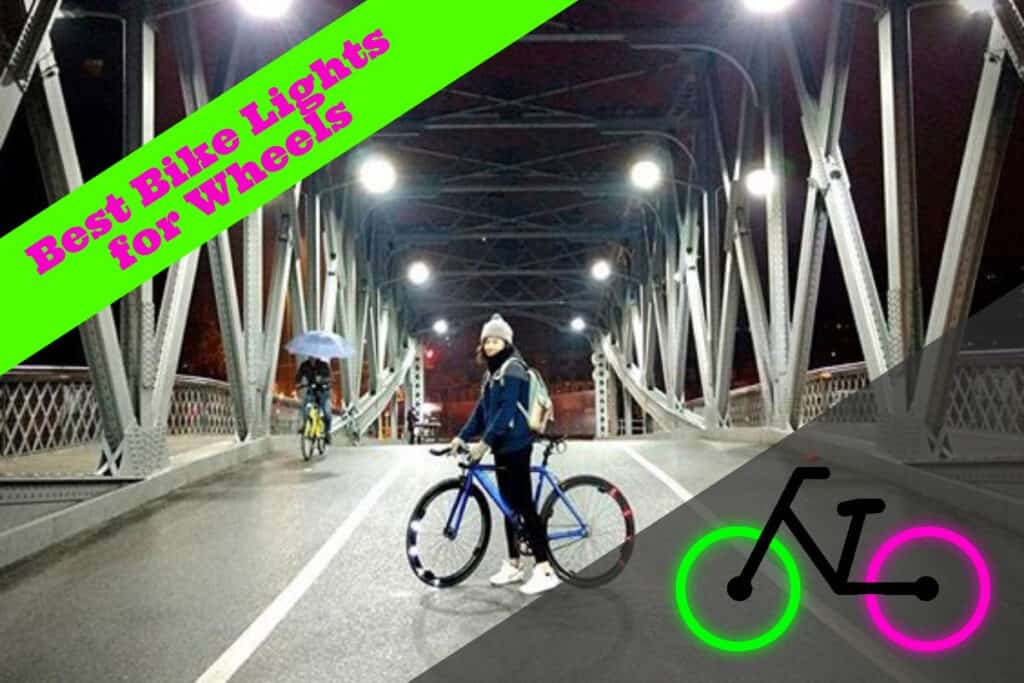Choosing the right light bulbs for your bathroom isn’t just about brightness; it’s about setting the right mood, ensuring safety, and maximizing functionality. You want a space that’s both invigorating in the morning and calming at night, right?
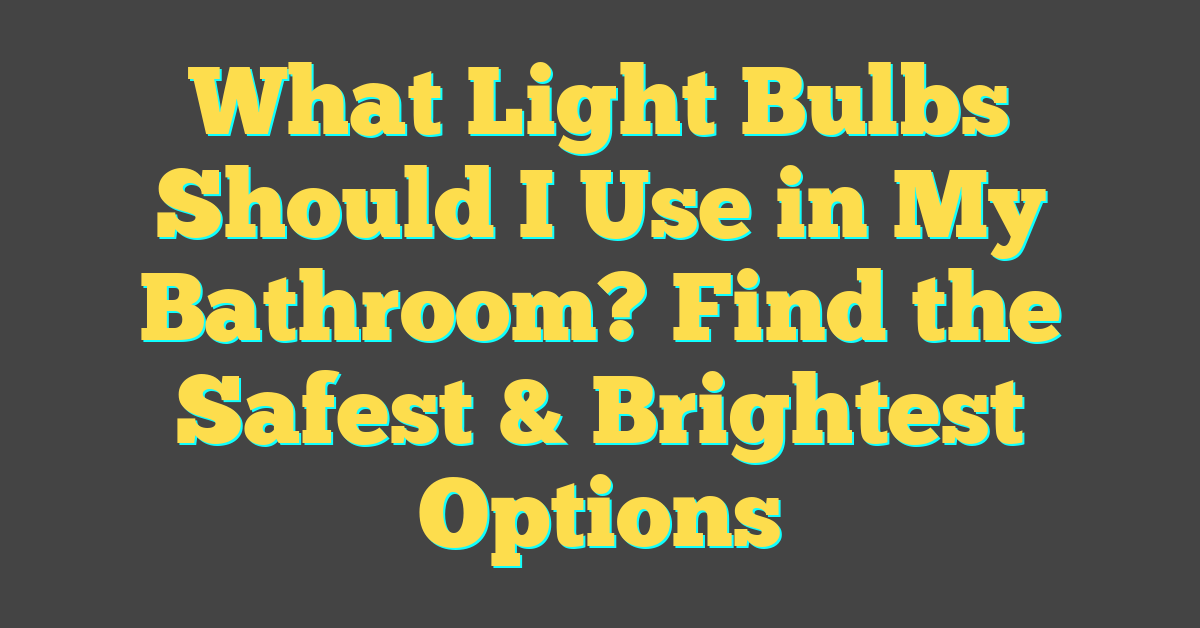
With so many options out there, from LEDs to halogens, and features like dimmability or color temperature, picking the perfect bulb can feel overwhelming. But don’t worry, you’re about to get the lowdown on making your bathroom shine in all the right ways.
Think of your bathroom lighting as the unsung hero of your morning prep and evening unwind. Let’s dive into how to select the best bulbs that’ll make your bathroom both practical and a little slice of paradise.
Considerations for Bathroom Lighting
When you’re sizing up your bathroom for new lighting, keep in mind that each space is unique. Here are a few key considerations to turn your bathroom into a well-lit sanctuary.
Brightness Levels
A primary factor to ponder over is brightness. Bathrooms serve multiple functions – from brisk morning routines to relaxing evening unwindings. To accommodate these varied tasks, adjustable brightness is a game-changer. Consider installing dimmers for versatility. You’ll thank yourself when you’re not blinded by high wattage bulbs early in the morning or during late-night trips.
Color Temperature
Color temperature doesn’t only affect the look of your bathroom; it sets the mood. Typically measured in Kelvin, higher color temperatures emit a cooler, bluer light, akin to daylight, which is great for makeup application and shaving. On the flip side, lower temperatures cast a warmer, more calming light – perfect for a soak in the tub. Here’s a quick guide:
| Use Case | Ideal Color Temperature (Kelvin) |
|---|---|
| General Use | 3000 to 4000K |
| Task Lighting | 5000 to 6500K |
| Relaxing | 2700 to 3000K |
Safety First
It’s not just about functionality and mood; safety is paramount. The bathroom is a high-humidity area, and lights here need to be resistant to moisture. Look for bulbs and fixtures with suitable IP ratings to ensure they can handle the steam from your hot showers without issue.
Energy Efficiency
Lastly, your bulbs’ energy consumption matters. LED bulbs are a top pick as they consume less power and last longer than traditional bulbs. This means more savings for you and a step towards a greener planet. When you’re browsing, keep an eye out for the Energy Star certification for added assurance.
Remember, lighting can make or break your bathroom’s design and functionality. With these considerations in mind, you’re ready to find the perfect bulbs that cater to your every need.
Understanding Color Temperature
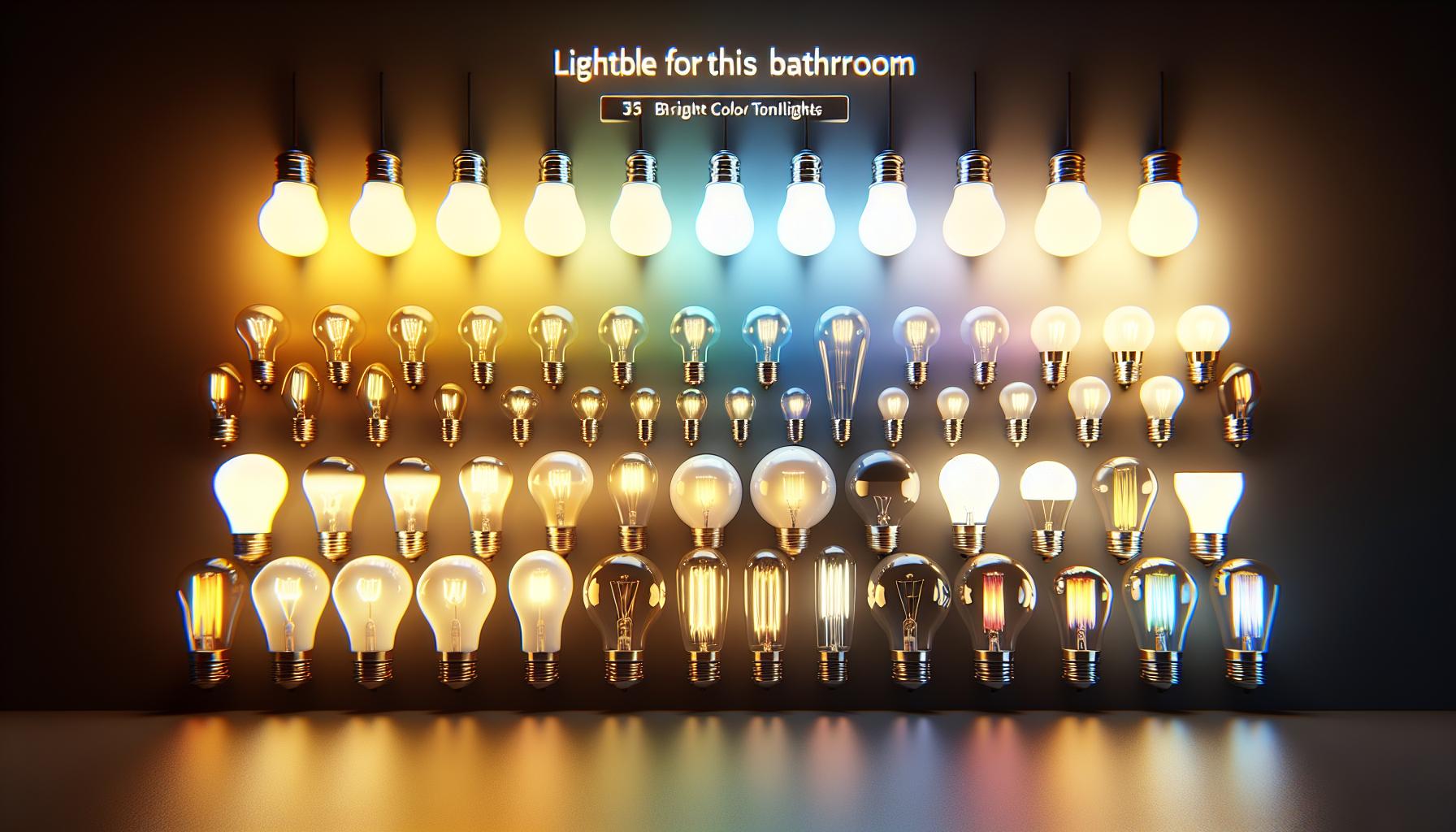
When you’re picking out bulbs for your bathroom, knowing about color temperature is a must. It’s vital to get this aspect right because it does so much more than just light up your space—it can completely alter the ambiance of your bathroom.
Color temperature is measured in Kelvin (K) and ranges from warm to cool. Here’s what you need to know:
- Warm lighting falls between 2500K to 3000K and provides a cozy, calming glow that’s perfect for a relaxing bath after a long day.
- Neutral lighting sits around 3500K to 4100K, ideal for striking a balance, neither too warm nor too cold.
- Cool lighting ranges from 5000K upwards, offering a bright, crisp light suitable for tasks like shaving or applying makeup.
Here’s a quick snapshot to help you visualize the Kelvin scale:
| Kelvin Range | Lighting Type |
|---|---|
| 2500K – 3000K | Warm White |
| 3500K – 4100K | Neutral/Daylight |
| 5000K – 6500K | Cool White/Bright Daylight |
Keep in mind that the higher the Kelvin number, the closer the light’s color will be to natural daylight. You’ll want to carefully consider the times of day you use your bathroom the most and the activities you do there. If your bathroom serves as a sanctuary where you unwind, a warmer hue might be best. If it doubles as your power-up zone where you prep for your day, look into the cooler end of the spectrum.
Also, you might want to consider having multiple light sources with different color temperatures. This way, you can switch from warm to cool light as needed. Don’t forget that the color of your walls and bathroom fixtures will interact with the light, potentially altering its appearance. Light-colored tiles and walls will reflect more light, which can amplify the effect of your chosen color temperature.
« How Big is a Standard Light Bulb? Find Your Perfect Light Size
What Kind of Light Bulbs for Wax Warmers? Find Your Perfect Match »
Armed with this info, you’ll be able to select the best color temperature for your bathroom lighting needs, ensuring not just functionality but also comfort and style. Remember, lighting isn’t just about seeing better; it’s about creating an environment that reflects your taste and supports your lifestyle.
Types of Light Bulbs for Bathrooms
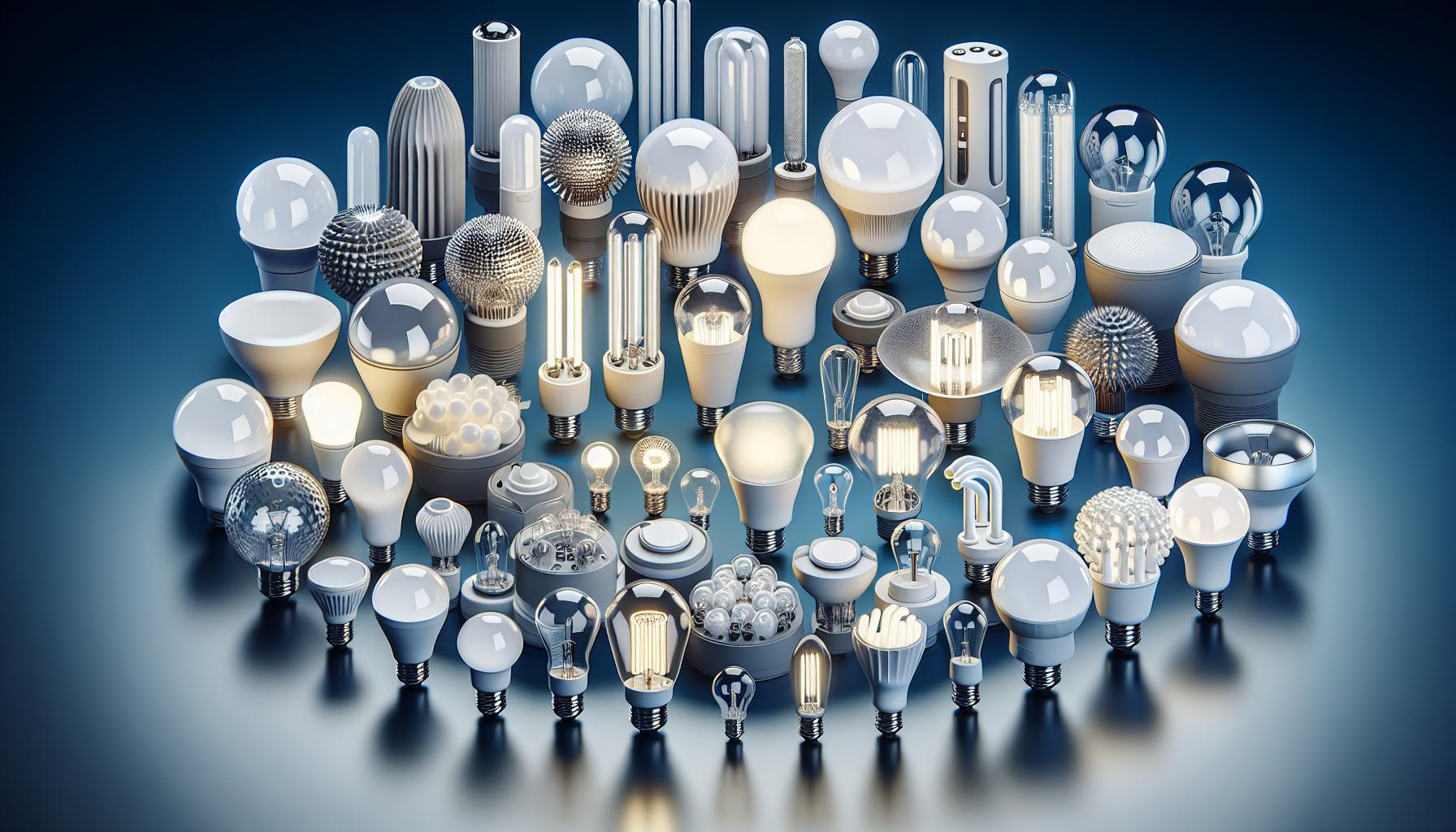
It’s essential to know about the different types of light bulbs you can use in your bathroom to create the perfect balance of light for any occasion. Whether you’re applying makeup, shaving, or simply relaxing in a warm bath, the right lighting makes all the difference.
LED Bulbs are your go-to option for energy efficiency and longevity. They use at least 75% less energy and last 25 times longer than traditional incandescent bulbs, saving you money over time. Moreover, their ability to emit light in a specific direction makes LED bulbs an ideal choice for task lighting around mirrors.
For a soft, warm glow reminiscent of incandescent lamps, consider Halogen Bulbs. Though they’re not as energy-efficient as LEDs, halogens provide excellent color rendering, meaning colors look more vibrant and true to life – a crucial feature when you’re matching clothing or applying cosmetics.
Another category to ponder is CFLs, or Compact Fluorescent Lamps. These bulbs offer a longer life and higher energy savings compared to traditional incandescents. With their tube-like design, CFLs can sometimes be visible in certain bathroom fixtures, which could be a design consideration for your space.
Smart Bulbs bring an advanced twist to bathroom lighting. With features like adjustable color temperatures and brightness controlled from your smartphone, these bulbs can switch from energizing daylight to calming soft white light with a single tap, enhancing your bathroom experience dynamically.
| Light Bulb Type | Energy Efficiency | Life Span |
|---|---|---|
| LED Bulbs | High | Very Long |
| Halogen Bulbs | Moderate | Moderate |
| CFLs | High | Long |
| Smart Bulbs | Varies | Varies |
Remember to check for IP ratings when selecting light bulbs to ensure they can withstand the humid bathroom environment. IP65-rated bulbs are generally recommended, as they’re dust-tight and protected against water jets, offering you peace of mind in damp conditions.
LED Light Bulbs
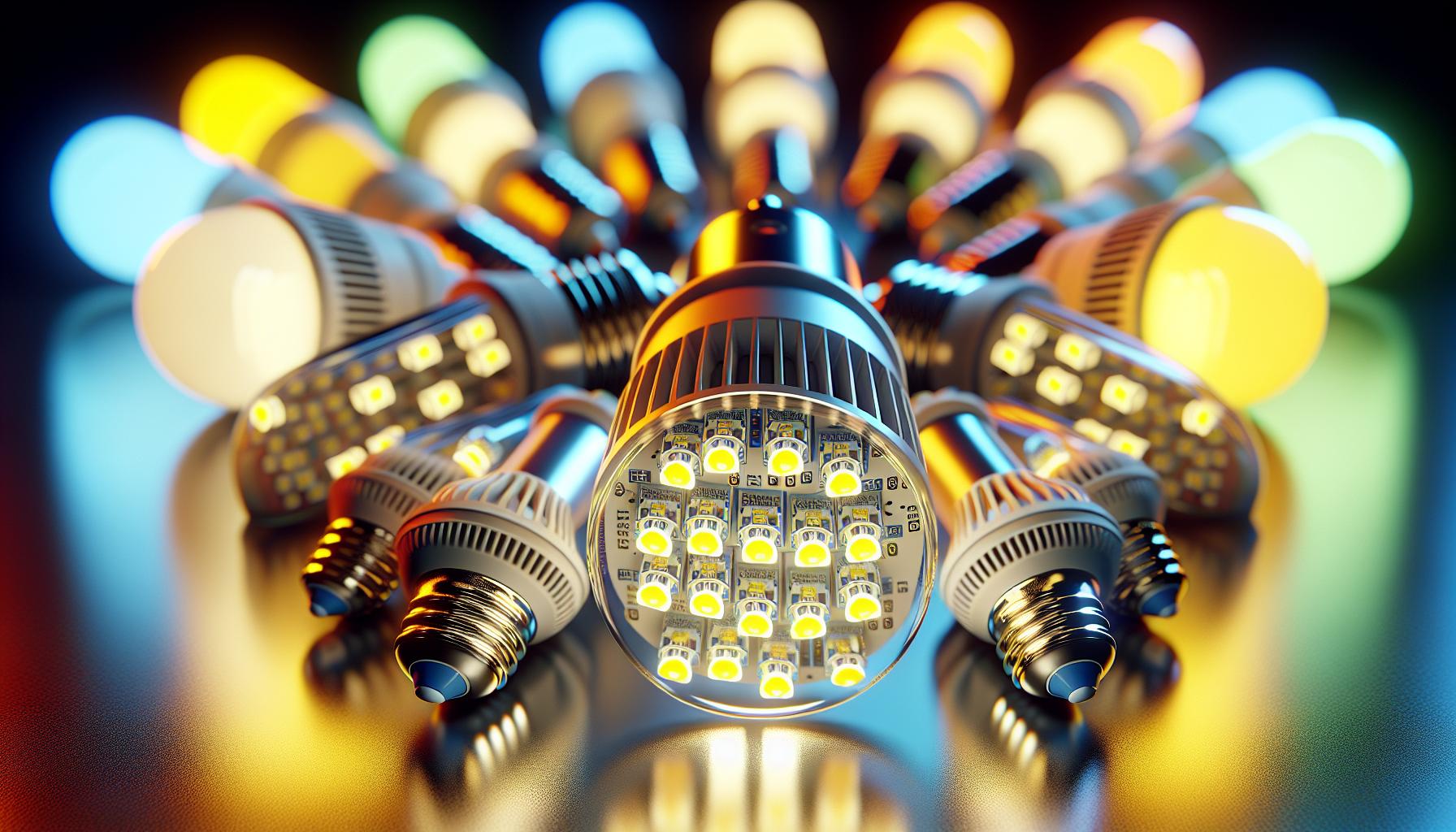
When it comes to renovating your bathroom or just upgrading the lights, LED light bulbs stand out as the go-to option for several reasons. Firstly, let’s talk about their energy efficiency. LEDs are known to consume significantly less electricity compared to traditional incandescent bulbs. To put it in perspective, an LED can use up to 75% less energy and last 25 times longer. That’s a huge difference that’ll reflect on your energy bills and how often you find yourself climbing a ladder to change a bulb.
You might wonder about brightness since your bathroom isn’t just a place to shower but also where you groom and often get ready for your day. LED bulbs come in a wide range of lumens, a term used to describe the amount of light a bulb emits. While a standard bathroom may require around 500 to 600 lumens, you can easily find LED bulbs that provide the necessary brightness without the excess heat generated by other types of bulbs.
Color temperature is another key factor that LED bulbs have mastered. They offer a spectrum of colors from cool whites that resemble daylight to warm whites that cast a cozy, amber tone. This versatility means you can tailor the ambiance of your bathroom to your mood or the time of day. Opt for cooler temperatures for tasks like applying makeup or shaving, where detail and clarity are important, and warmer tones for a relaxing bath after a long day.
An added bonus with LEDs comes in the form of dimmer compatibility. Many LED bulbs now pair with dimmers, which means you can adjust the brightness to your liking at any given time. Keep in mind, though, that not all LEDs work with all dimmers, so it’s crucial to check compatibility before making a purchase.
Durability is also a significant plus. LED bulbs are more resistant to shock, vibration, and extreme temperature changes, which is ideal since bathrooms experience a lot of humidity and frequent lighting changes. Don’t forget to check those IP ratings we mentioned earlier to ensure your LEDs can combat the bathroom moisture.
While LEDs may come with a higher upfront cost, their long-term savings and benefits far outweigh the initial investment. You’ll be making a choice that’s not only smart for your wallet but also kinder to the planet, reducing your carbon footprint one light bulb at a time.
Halogen Light Bulbs
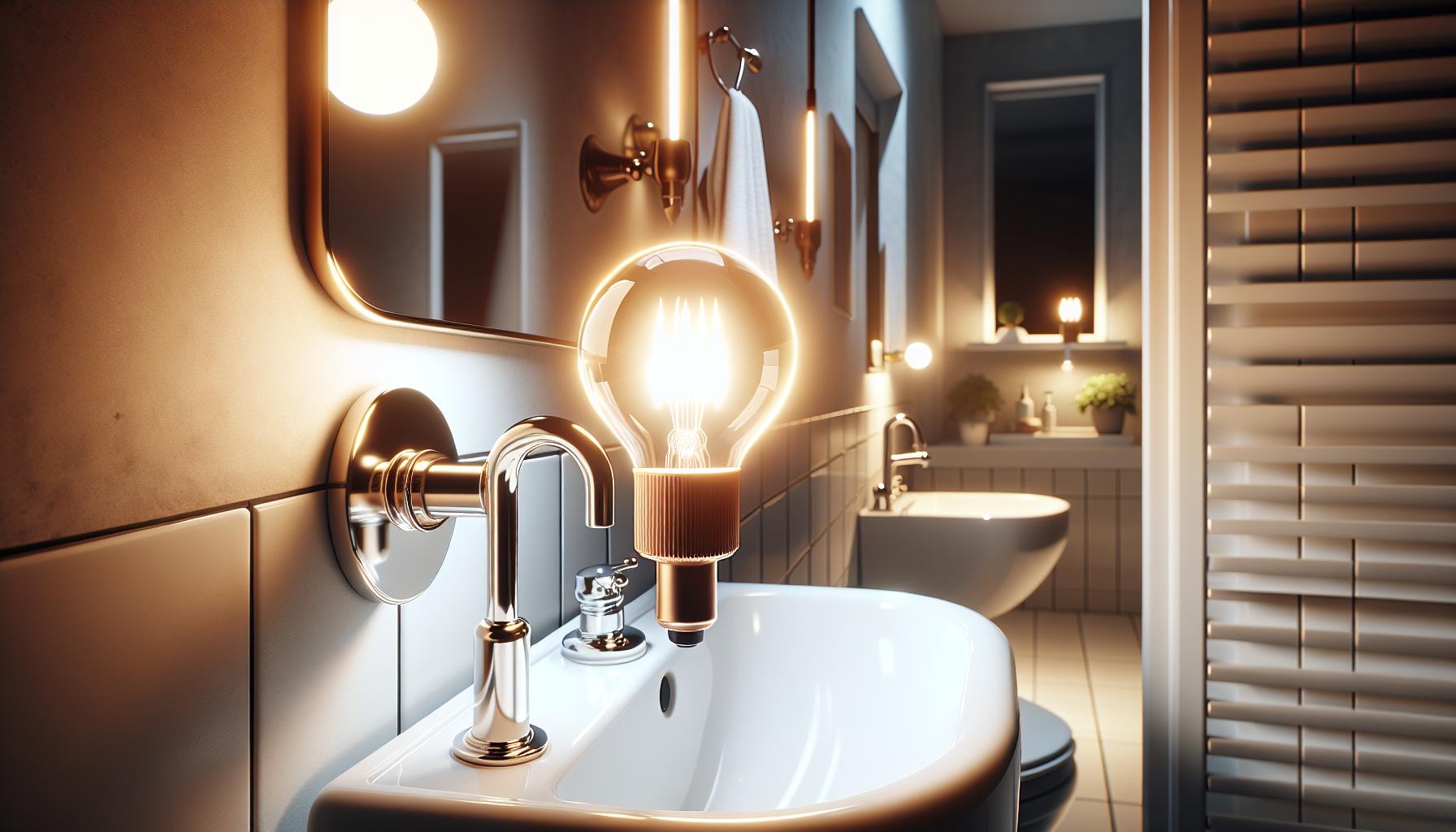
When you’re looking to bring warmth to your bathroom’s ambiance, halogen light bulbs could be your go-to. They strike a balance between the old-school appeal of incandescent bulbs and the smart functionality that LEDs bring to the table. Are you familiar with the cozy, white light that seems to caress your skin with a sun-like glow? That’s halogen magic for you.
Halogen bulbs work on a principle similar to incandescent bulbs, but they’re packed with a punch of halogen gas which allows them to burn hotter and therefore, brighter. What’s more, they use a tad bit less energy compared to their incandescent cousins. You’ve got a taste for lights, so you’ll appreciate that these bulbs can render your bathroom’s colors with more fidelity – that means true-to-life hues when you’re matching your outfit or applying makeup.
Here’s another nifty benefit – halogen bulbs are dimmer-compatible. Imagine soaking in the tub with the lights dialed down low; it’s like a spa session without the hefty bill. But they don’t just create moods; they’re practical. You can crank up the brightness for cleaning days or when you’re managing intricate tasks that require your keen eye.
And about that energy consumption: while halogens are not as energy-efficient as LEDs, they’re certainly an improvement over incandescent bulbs. If you’re not ready to make the leap to LEDs for whatever reason, halogen bulbs can be your middle ground.
Just a little heads up, though – they tend to run hot. It’s the trade-off for that delightful brightness and color accuracy. So you’ll want to be sure your fixture can handle the heat. And speaking of handling, always grip halogen bulbs with a cloth or use gloves; oils from your skin can shorten their lifespan.
Before you jump into your DIY mode or start revamping your bathroom lighting, remember that halogen bulbs have a spectrum of choices too. They come in various shapes, sizes, and watts, giving you the versatility that your creative lighting projects crave. Whether you’re going for a flood or a spotlight effect, there’s a halogen out there that’ll fit your vision.
Incandescent Light Bulbs
When you’re looking to capture that classic warmth in your bathroom, you might turn your attention to incandescent light bulbs. These bulbs are the old-timers of the lighting world, radiating a glow that many find comforting and familiar. Let’s dive into what makes incandescent bulbs an enduring choice despite newer technologies on the market.
Firstly, incandescent bulbs create a spectrum of light that’s akin to natural sunlight, which means they make your bathroom feel more inviting. When you’re applying makeup or shaving, the light quality can truly make a difference. Incandescent bulbs boast a Color Rendering Index (CRI) of 100, which is the highest possible score. This means they show the true colors of your skin and surroundings, almost as if you were outside on a sunny day.
Incandescent bulbs aren’t known for their energy efficiency, but they have a saving grace – they’re inexpensive upfront. If you’re on a budget and need a short-term lighting solution, they might just be your go-to.
However, remember that they have a shorter lifespan compared with LEDs and halogens, usually around 1,000 to 2,000 hours. Here’s how that stacks up against other types:
| Type | Average Lifespan (Hours) |
|---|---|
| Incandescent | 1,000 – 2,000 |
| Halogen | 2,000 – 4,000 |
| LED | 15,000 – 50,000 |
On the safety front, because they generate more heat, you’ll want to ensure your bathroom has good ventilation and that the fixtures are not in close proximity to anything flammable.
As for aesthetics, if you adore that vintage look or have a retro-style bathroom, incandescents can enhance that vibe beautifully. They fit perfectly with antique fixtures and add to an overall soothing ambiance.
Regarding dimming capabilities, incandescent bulbs are highly compatible with most dimmer switches, allowing you to easily adjust the lighting according to your mood or the time of day.
Whether you’re going for practicality, cost-efficiency, or nostalgia, incandescent light bulbs present an option that, while not the latest, has stood the test of time in homes.
Compact Fluorescent Light Bulbs
Have you considered compact fluorescent light bulbs (CFLs) for your bathroom? CFLs are a middle ground between the traditional incandescents you’re familiar with and the newer tech-savvy LEDs. These bulbs work by driving an electric current through a tube containing argon and a small amount of mercury vapor. This generates invisible ultraviolet light that excites a fluorescent coating on the inside of the tube to produce visible light.
While CFLs aren’t quite as energy-efficient as LEDs, they’re certainly a step up from incandescents, using about 70% less energy. And when it comes to cost, they strike a balance, being cheaper than LEDs but slightly more pricey than their incandescent counterparts.
Yet, there’s more to CFLs than meets the eye:
- Energy Consumption: Expect to reduce your energy bill as CFLs consume significantly less power than incandescents.
- Longevity: With a lifespan typically 6 to 10 times longer than that of incandescent bulbs, you’re not only saving in terms of replacement costs but also reducing the hassle of frequently changing bulbs in hard-to-reach areas.
- Warm-Up Time: Unlike LEDs that brighten up instantly, CFLs need a bit of time to warm up to their full brightness. However, once there, they provide a pleasant light that’s easier on the eyes than the sometimes harsh light of some LEDs.
Looking into color temperature, CFLs deliver a range of options to fit your personal preference and the mood you aim to set in your bathroom. Starting from warm white to cool white, they can mimic the cozy glow of incandescent bulbs or offer a sharper, daylight-like quality. Check out the lighting facts label to find the perfect match for your space, and remember the CRI – CFLs generally have a rating between 70 to 90, decent enough to render colors accurately.
Keep in mind that CFLs contain a small amount of mercury, so you’ll need to handle them with care and recycle properly to minimize environmental impact. Proper disposal ensures that you’re not only brightening up your space but also contributing positively to the planet’s well-being.
Dimmable Bulbs for Ambiance
When you’re planning the perfect bathroom ambiance, you can’t overlook the impact of dimmable bulbs. These versatile light sources allow you to adjust the brightness to match your mood or the time of day. Imagine easing into a relaxing bath with the lights dimmed low or preparing for the day with a bright and invigorating light—dimming functionality turns your bathroom into a multipurpose haven.
Why Opt for Dimmable Lights?
- Control: Fine-tune lighting levels for various tasks.
- Energy Savings: Reducing brightness can lower energy use.
- Longevity: Dimming can extend the bulb’s life.
LEDs are the top contenders when it comes to dimmable bulbs. They work seamlessly with dimmer switches and provide a wide range of lighting options—from a bright, daylight-like glow to a soft, warm light. Keep in mind that you’ll need to ensure your dimmer switch is compatible with LED bulbs to avoid flickering and ensure smooth operation.
Compact fluorescent bulbs can also be dimmed but typically don’t offer the same smooth transition as LEDs and may require a special dimmable ballast. With CFLs, you’ll also need specific dimmable models, as using a non-dimmable CFL on a dimmer can shorten its lifespan or even damage both the bulb and the switch.
While incandescent bulbs are inherently dimmable and offer a traditional feel, their lower energy efficiency and shorter lifespan don’t make them the most practical choice for frequent dimming use.
- Check compatibility with your dimmer switch.
- Select a bulb that provides the appropriate light output (lumens) for your space.
- Consider the color temperature for desired warmth or coolness.
By incorporating dimmable bulbs into your bathroom, you create a space that adapts to your needs, whether that’s bright and clear for attention to detail or subdued for a spa-like atmosphere. Remember, the right lighting can significantly affect your bathroom’s functionality and comfort.
Maximizing Safety in the Bathroom
While exploring the suitable light bulbs that will brighten your bathroom and enhance its atmosphere, it’s crucial to not overlook the aspect of safety. Bathrooms can be slippery, and proper lighting plays a pivotal role in reducing the risk of accidents. Here’s how you can ensure the lighting choices you make are safe for everyone.
First off, use bulbs that provide consistent lighting with no flickering. Flickering can cause visual disturbances that might lead to slips or falls. LED bulbs are renowned for their steady performance. Plus, because they operate at a lower temperature compared to incandescent bulbs, they reduce the risk of burns or fires.
It’s also important to consider the IP rating of the light fixtures you choose. This rating indicates how resistant a fixture is to moisture and dust – both are prevalent in bathrooms. Look for a fixture with at least an IP44 rating, which signifies that it’s protected against splashing water. This is especially critical for areas near the shower or bath.
Ground Fault Circuit Interrupter (GFCI) outlets should be installed whenever lighting fixtures are close to water sources. These outlets will cut the power if a spike in the electrical current is detected, helping to prevent electrocution. If you’re not sure about how to install these, it’s best to call in a professional.
Finally, consider the following to maximize safety in your bathroom lighting:
- Choose bulbs with enough brightness to clearly illuminate wet areas but aren’t too harsh as to cause glare.
- Ensure all lighting fixtures are securely installed to avoid accidents.
- Select light bulbs that are low maintenance to avoid frequent bulb changes in hard-to-reach places.
By taking these precautions, your bathroom will not only be a visually appealing space but also a safer one. Remember to always double-check product certifications and installation guidelines to ensure you’re meeting safety standards. Keep an eye out for more DIY projects that can further improve the efficiency and safety of your home lighting.
Conclusion
Choosing the right light bulbs for your bathroom isn’t just about aesthetics; it’s also about safety and functionality. Remember to opt for LED bulbs that offer steady, flicker-free light and keep an eye on that IP rating for moisture protection. Don’t forget the GFCI outlets to safeguard against electrical hazards. With the right brightness, your bathroom will be a safe and welcoming space. Just a little attention to these details will ensure your bathroom lighting is as reliable and low maintenance as it is beautiful. Stay bright and safe!
Frequently Asked Questions
What is the best type of bulb for bathroom lighting to enhance safety?
LED bulbs are recommended as they offer steady, consistent lighting with minimal heat emission, reducing the risk of burns or fires.
Why is it important to have bulbs that don’t flicker in the bathroom?
Consistent lighting without flickering is vital in bathrooms to reduce the risk of accidents due to sudden changes in visibility.
What is an IP rating and why is it significant for bathroom light fixtures?
An IP rating indicates the level of protection a fixture has against moisture and dust. A higher IP rating is essential for bathroom fixtures to ensure safety and durability in wet conditions.
Should GFCI outlets be installed in bathrooms? If so, why?
Yes, Ground Fault Circuit Interrupter (GFCI) outlets should be installed near water sources in bathrooms to prevent the risk of electrocution.
How bright should bathroom light bulbs be?
Bulbs should be bright enough to illuminate wet areas clearly without causing glare, which can be dangerous in slippery conditions.
What considerations should be made when installing bathroom lighting fixtures?
Ensure that fixtures are securely installed in hard-to-reach places and select low maintenance bulbs to minimize the need for frequent changes.




